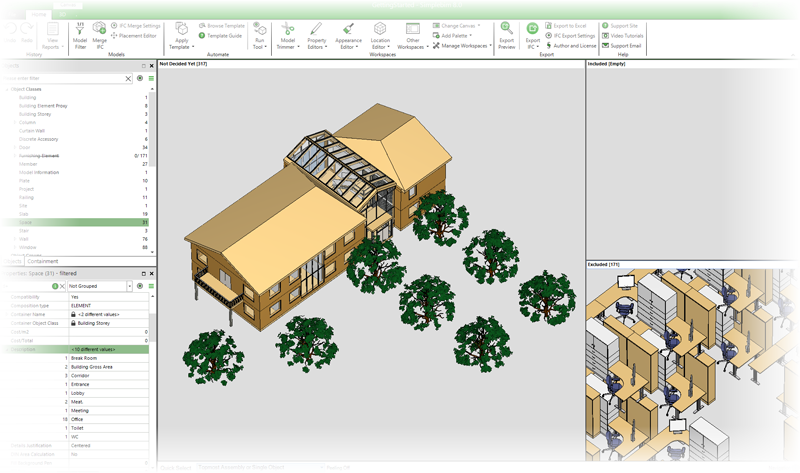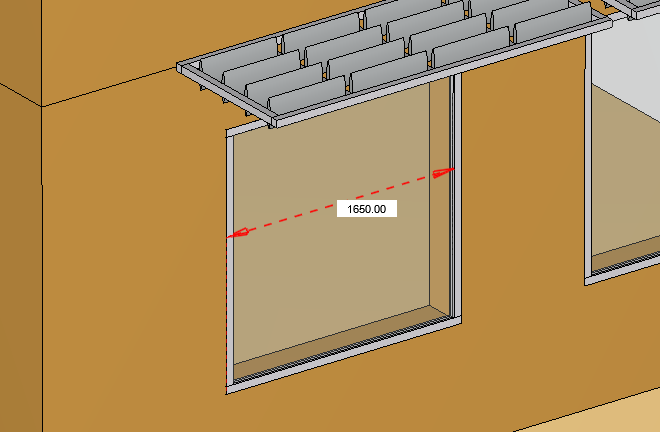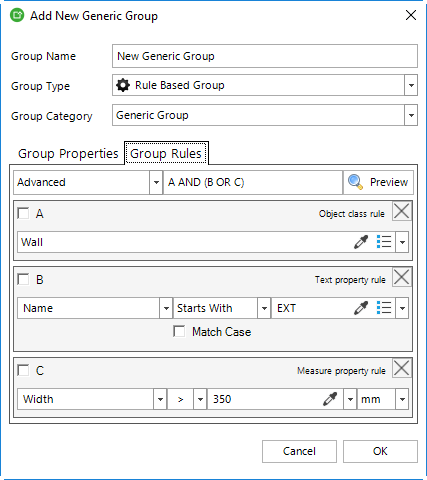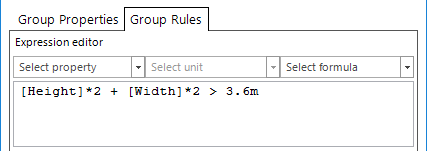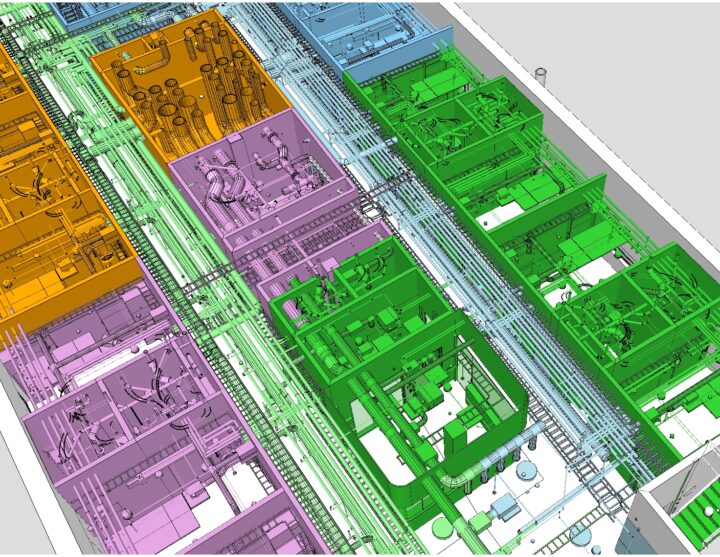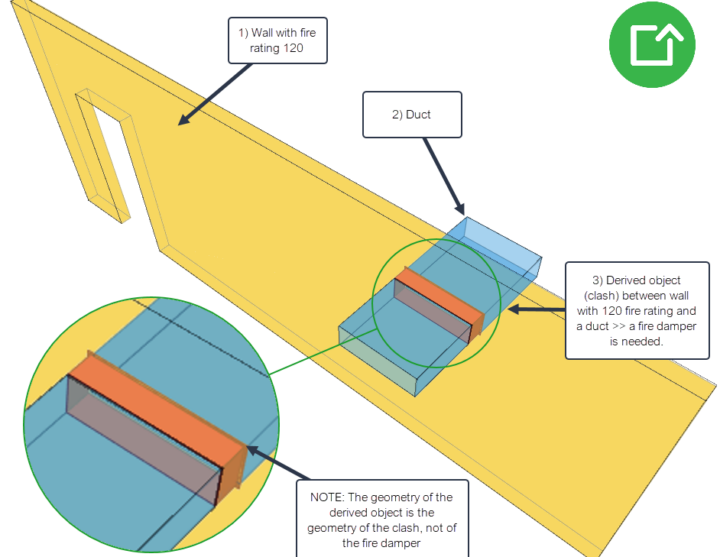What’s new in Simplebim 8.0?
08.01.2020
The fresh new Simplebim 8 is here! The look and feel got a major overhaul making Simplebim more pleasing to the eye and easier to use. Our 3D window now supports multi color objects, grid lines, 2D annotations, edge visualization and has a measurement tool. We also added a left mouse button based Viewer navigation mode, without loosing our signature 3D drag&drop functionality! Creating object groups with complex AND/OR rules and expressions is now possible from the user interface and quantity calculation has been vastly improved based on feedback from previous version. We hope you will enjoy this new major milestone in our continuous development of Simplebim!
New look and feel
Over the years we had added a lot of functionality to Simplebim without paying too much attention to how everything looked. Now we felt it was finally time to give Simplebim a more professional look that makes justice to it’s power. Not just to make things look nice, but also to make using Simplebim easier and more logical to use. All icons have been re-designed, there is a new color palette and the layout of different palettes has been synchronized.
Support for multi color objects
We received a lot of feedback about the one-color-per-object limitation of previous Simplebim versions. We took this to heart and version 8 can now display multi color objects in 3D and also export them correctly back to IFC. Multiple colors are even supported in our model splitting tool. When you split a multi color object, the resulting parts correctly maintain all their colors!
Support for grids and 2D annotations
Simplebim can now import, display and export grid lines. We can also import, display and export the 2D geometry representation of IFC objects. However, there are still some performance bottlenecks with 2D geometry and Simplebim might become unresponsive if you import very large 2D data sets, such as large floor plans. But also in those cases you can still export the model back to IFC even though the 3D window might get slow.
3D navigation and visualization improvements
In the past Simplebim has used a non-standard mouse navigation, because the left mouse button was reserved for our signature drag&drop from the 3D window. We have now added a Viewer Navigation mode, in which you rotate the model with the left mouse button like in most applications. But if you keep the left button pressed for a while, the drag&drop will be initiated instead of rotating the model. For those who have become accustomed with the old right mouse button navigation we preserved the Simplebim Navigation mode as an option. We also added an option for visualizing the edges of 3D objects to enhance the visual clarity.
New measure tool
The 3D window now has a tool you can use for measuring the distance between two arbitrary points, lines or planes.
Improved workspace configuration
In previous releases we have gradually improved the ability to configure and store workspace and this continues to be a priority for us. It is out goal that you can create the ultimate BIM experience for any use case by combining simple data with a simple user interface. In the past you might have struggled a bit to know which settings get stored with the workspace and which not. In Simplebim 8 we unified the configuration, i.e. the settings that get stored and restored, in each palette in a separate menu. We also improved the ability to hide unnecessary data and elements from the various palettes. These include isolating sections of the Objects palette and isolating property sets in the Properties palette.
Improved quantity calculation
One of the strengths of Simplebim is the ability to calculate quantities from the geometry of objects. This is useful if the original IFC model does not have quantities, you don’t trust the quantities in the model or you want a ‘second opinion’ and compare the quantities in the model with the ones calculated by Simplebim. In version 8 we added shadow area calculations, which produce more reliable results for example for complex slabs. You can now also calculate quantities for containers (like curtain walls) and doors and windows have both dimensions for the object itself and the opening they are placed in.
Creating rule based groups from the user interface
In the past you could create rule based groups only from templates. Now you can do this from the user interface by adding/editing a group from the Objects palette. Rule based groups now support complex AND/OR rules and even expressions. There are very few limitations to what kind of groups you can create.
Improved rule creation from templates
You can now use ‘auto groups’ to create a separate group for each unique value of a property in the model. You can for example create a group for each wall type with just one row in the template. It is also possible to create hierarchies of groups, i.e. assign parent groups and to assign groups to categories in the same row on which they are created.
Other improvements
- Improved startup view with template filtering
- Faster model splitting
- Faster model merge
- More reliable release of network licenses
- Improved table palette
- News system for bringing you relevant notifications inside Simplebim.
